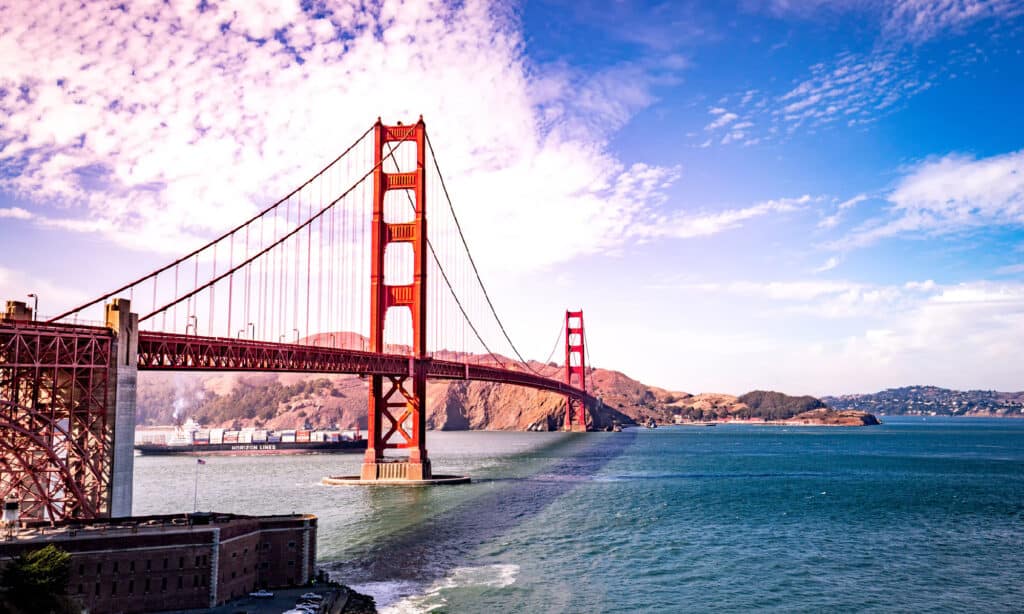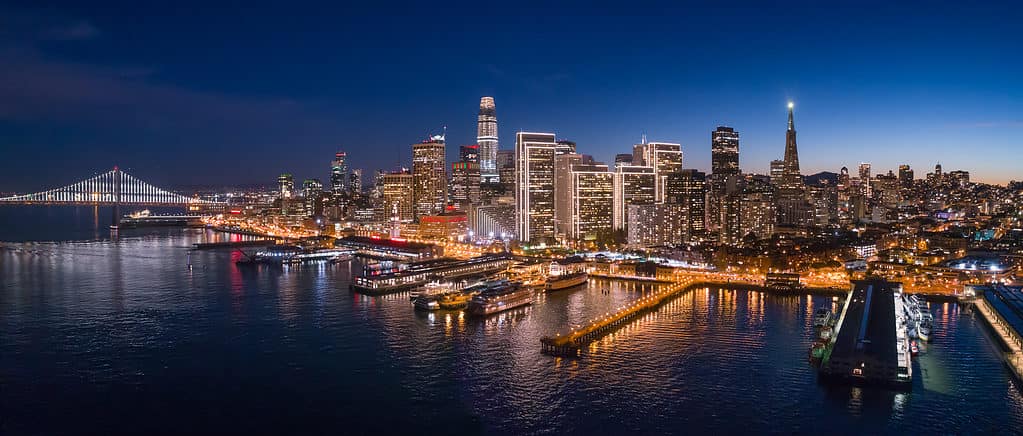Around 20 to 30% of the population annually suffers from seasonal allergies. Although San Francisco has a low overall allergy ranking amongst US cities, it has a long allergy season which can still be challenging for allergy sufferers. Plus, there is still a wide variety of different trees and plants that can trigger allergies in San Francisco. Therefore, in this article, we’ll discover which plants trigger allergies in every season and when the allergy season peaks. We’ll also explore what you can do to alleviate your allergy symptoms.
When is Allergy Season in San Francisco?

©iStock.com/Christine944
The allergy season in San Francisco lasts from January to November. The long allergy season offers allergy sufferers little respite from seasonal allergies. However, despite the length of its season, San Francisco does not rank high on 2022’s list of allergy capitals. According to the Asthma and Allergy Foundation of America, San Francisco ranks at only 98 overall, rising to 94 during the spring and dropping slightly to 99 in the fall.
How Do Plants Cause Allergies?
If you’re an allergy sufferer, you likely already know that certain plants or trees are your allergens, but have you ever wondered why your body reacts to them?
The answer is very simple — your body assumes that plant pollen is harmful and tries to fight it. This is called an immune response, which triggers the release of histamine to attack the “harmful” substance. Under normal circumstances, this is a perfectly natural reaction by the body. However, the problem arises because the pollen — or whatever else you’re allergic to (pet hair, mold, etc.) — is misidentified by the body as something harmful to it. Therefore, common allergy symptoms occur when the body tries to fight it. These include sneezing, itching, watery eyes, and a runny nose.
Plants that Cause Allergies in San Francisco (By Season)

©Engel Ching/Shutterstock.com
Although many plants can cause allergies, we can classify seasonal allergens into three main groups: tree, grass, and weed. As these usually occur at different times of the year, it’s entirely possible for you to suffer worse with your allergies at a certain time of the year, depending on which ones trigger your allergies the most.
Spring
As we’ve already mentioned, spring is the worst time of the year for allergies in San Francisco, and this is the time of the tree pollen. The most significant allergens during the spring come from oak, maple, and willow trees. Willow trees, in particular, begin pollinating in February and can continue well into May.
Pacific poison oak (Toxicodendron diversilobum) is another major allergen in San Francisco. Despite its name, it is not actually an oak — instead, it’s a woody vine. It causes a rash and itching after being touched. However, it can also cause the same reaction if it is burnt and the smoke is inhaled.
Summer
As the days roll on into summer, it is time to tune our attention to the grasses. Although grasses may look innocuous, they release vast amounts of pollen into the air. The area’s main causes of grass allergies are bluegrass, ryegrass, timothy, bent, and Bermuda grass. Bent grass is among the most significant, known for being a high pollen producer.
Fall
Next, we move into fall, which is the turn of the weeds. Of all the weeds in the country, ragweed is easily the one that allergy sufferers fear the most. This is because of its ability to produce around one billion grains of pollen every year from one plant. Sagebrush is another common fall allergen. It is a shrub-like weed and pollinates in the late summer and early fall months.
Winter
Finally, we head into winter. However, the relatively stable and mild climate of San Francisco means there isn’t a huge gap between the end of one allergy season and the start of the new one. Also, the late pollination of some weeds and the early pollination of some trees can mean that the allergy season gradually becomes a little longer every year. Plus, even if your seasonal allergies take a break during the winter, other allergens exist around you — such as mold.
How to Ease Allergy Symptoms
Now that you know exactly which plants cause allergies in San Francisco and how they do it, you’re probably wondering if there’s anything that you can do about them. Well, the good news is that there is. In fact, there are two steps that you can take. Let’s go through them in detail below.
Avoidance
Although it’s impossible to avoid the pollen that aggravates your allergies completely, there are things that you can do to limit your exposure to them.
- Take an allergy test: An allergy test can tell you which types of pollen you are allergic to. This can help you to avoid exposure to it during peak times.
- Watch the pollen count: The pollen count indicates how much pollen there is around each day. When the pollen count is high, staying indoors as much as possible is a good idea. You should also keep your windows and doors closed at peak times too.
- Avoid gardening: We know the last thing you want to do is to have to avoid spending time in your garden. However, chores such as weeding, mowing the lawn, and trimming trees mean you are putting yourself right in the middle of all the grains of pollen that are around.
- Wash your clothes: Although it may seem simple, changing and washing your clothes after you’ve been outside can make a big difference — especially if you’ve been in the garden. This is because the pollen grains can stick to your clothes and then get tracked into your home. However, it’s also important to avoid hanging your laundry outside as otherwise, the exact same thing will happen when you bring it back inside.
- Use an air purifier: Sometimes, no matter how hard you try, pollen will still manage to end up inside your home. This is the last thing you want as an allergy sufferer, as you at least want your home to be a safe, allergy-free space. Therefore, an air purifier or a powerful filter such as a HEPA filter will remove dust and pollen from the air, making it much cleaner for you to breathe in.
Medication
- Nasal sprays: Nasal sprays are a type of anti-inflammatory. They can be used to reduce the swelling in the blood vessels in your nose. This will help to open your airways and reduce some of the congestion caused by your allergies, allowing you to breathe easier.
- Oral antihistamine tablets: Possibly the best-known allergy treatment, oral antihistamines work to relieve allergy symptoms by blocking histamine in your body. Histamine is the substance that reacts to and attacks the allergen in your body.
The post Allergies In San Francisco: Everything To Know appeared first on AZ Animals.
from Animal News, Facts, Rankings, and More! - AZ Animals https://ift.tt/COQy64G